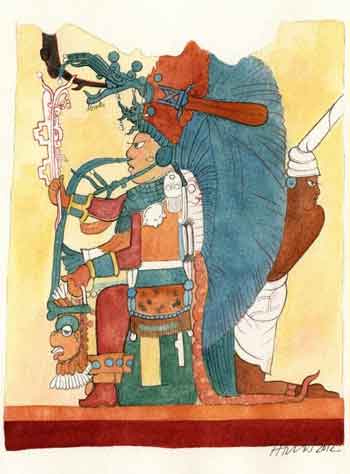(from chinadaily.com.cn)
The earliest known Mayan calendar has been found in an ancient house in Guatemala and it offers no hint that the world’s end is imminent, researchers said Thursday.

| Rather, the painted room in the residential complex at Xultun was likely the place where the town scribe kept records, scrawling computations on the walls in an effort to find “harmony between sky events and sacred rituals,” said the study in the journal Science.
The hieroglyphs date back to the ninth century, making them hundreds of years older than the calendars in the Maya Codices, which were recorded in bark-paper books from 1300 to 1521. |
Some appear to be the 365-day solar calendar, the 584-day cycle of the planet Venus and the 780-day cycle of Mars, said archaeologist William Saturno of Boston University, who led the exploration and excavation.
According to Saturno, the writing looks like someone’s attempt to sort out a very long math problem, as if on a blackboard.
“For the first time we get to see what may be actual records kept by a scribe, whose job was to be official record keeper of a Maya community,” Saturno said.
“The ancient Maya predicted the world would continue, that 7,000 years from now, things would be exactly like this,” he added.
| “We keep looking for endings. The Maya were looking for a guarantee that nothing would change. It’s an entirely different mindset.”
Furthermore, there is no sign that the much-hyped myth that the Mayan calendar would end in 2012, and with it the world, has any bearing in reality. All that ended in 2012 was one of its calendar cycles, said co-author Anthony Aveni, professor of astronomy and anthropology at Colgate University. |
“It’s like the odometer of a car, with the Maya calendar rolling over from the 120,000s to 130,000,” said Aveni.
“The car gets a step closer to the junkyard as the numbers turn over; the Maya just start over,” he added.